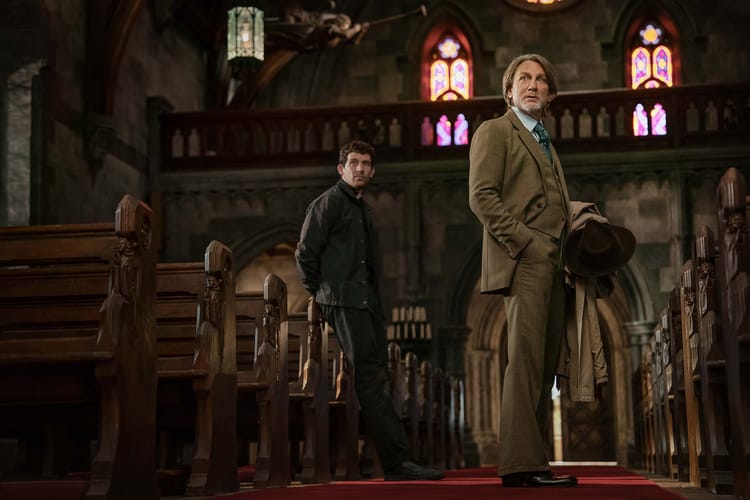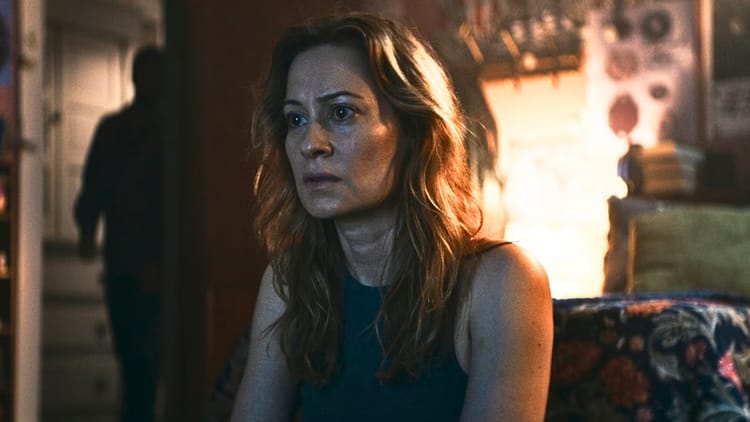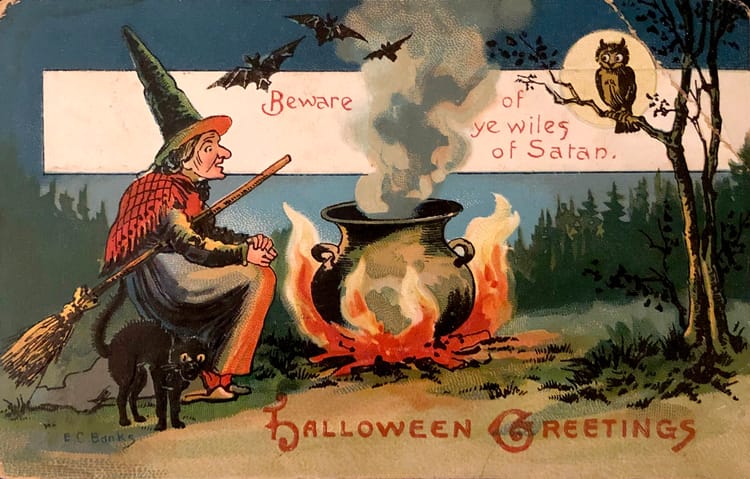Four African musicals everybody should watch

(Welcome to the Wednesday newsletter! Each week, I’m publishing a new pop culture essay from a freelancer. Remember: Your subscription fee helps me pay these freelancers for their efforts! This week: Tabby Kibugi runs down four African musicals worth watching.)
In several African countries, young people face challenges in pursuit of their ambitions. Unemployment, greed, corruption, poverty — all make pursuing one’s chosen career incredibly difficult. Enter an unlikely advocate for these young people: musicals, both for screen and stage. Some of these projects hail from Nollywood and Gollywood, two of the most vibrant film industries on the planet.
Films like Nigeria’s Hoodrush, South Africa's Sarafina!, Ghanaian film Coz Ov Moni, and the South African stage musical Ipi Tombi highlight the challenges young people in these countries face on a day to day basis and the strides they have to make in order to overcome them. They’re all worth watching for fans of musicals, fans of film, or anybody trying to better understand the many interweaving African movie industries.
And they all offer a compelling window into what it means to be young and striving in Africa today.
Sarafina! finds inspiration amid uprising
The 1992 film Sarafina!, directed by Darrell Roodt and screened out of competition at the 1992 Cannes Film Festival, wonderfully captures youth uprising. The movie, based on a stage musical of the same name, chronicles very real protests against the apartheid-era white government in South Africa in the 1970s.
Sarafina (Leleti Khumalo) represents the voices of young people in the streets of Soweto, Johannesburg. As a young student, Sarafina is inspired by her teacher (Whoopi Goldberg) to dream of freedom and a better future, and as a film, Sarafina! illustrates how apartheid acts as a hindrance to the future of young South Africans. As the film continues, Sarafina joins in the growing protests against the government, especially after the government moves to make Afrikaans the official language in her school and after her teacher is unlawfully arrested.
“Thank You, Mama,” a song sung by Sarafina to her mother is a particularly touching moment in the film. It underlines the deep connection between the two characters, despite Sarafina not approving of her mother working in a white household. And in the school concert that makes up some of the film’s final action, it’s fun to see Sarafina play Nelson Mandela, even though her classmates had originally mocked the idea of a woman taking up the role. Sarafina’s performance here opens up her theatrical side, as she pretends to be a celebrity, taking pictures and signing autographs.
As the film ends, Sarafina leads her peers in the song “Freedom Is Coming Tomorrow!” The song is both a personal reassurance for Sarafina but also a reminder that Nelson Mandela, her idol, is about to be released. And it shows the audience just how far Sarafina has come, going from someone who wanted to destroy the government to someone deciding to resist without choosing violence. The combination of the character arc, the music, and the choreography in this sequence make for a tremendous, unified conclusion to the film.
Hoodrush is a musical thriller built on some well-loved tropes
Hoodrush, a Nigerian musical thriller that received 11 nominations and two wins at Nigeria’s 2013 Nollywood Movie Awards, does a brilliant job of highlighting just how much more difficult life in the ghettos of Nigeria becomes for young people without a steady source of income. The film explores the challenges faced by two brothers who strive to build a musical career for themselves.
Shez and Tavier (OC Ukeje and Gabriel Afolayan) long to become superstars, despite their impoverished circumstances. They only have menial jobs that hardly cover their monthly expenses. But the prestigious African musical talent presents an opportunity for them to showcase their skills and ultimately win the grand prize.
But the high and mighty always have their say. Hoodrush highlights how much power has been bestowed upon by showing how, for instance, a wealthy older woman captures the heart of Shez because she has money, something he visibly lacks.
Under the steady eye of director Dimeji Ajibola, Hoodrush ultimately captures the lengths young people will go to when pursuing their ambitions. He also ably shows how life in the ghetto wears on the brothers, even as they try to escape their upbringing. In the end, only Tavier proceeds with the music competition while Shez abandons his true love for the rich woman who can cover his material needs.
The songs in Hoodrush are its particular strength, especially in how they advance the film’s storyline. Tavier’s audition for the talent show, for instance, is absurdly catchy, and it will leave you wanting to listen long after the film is over. And as the wealthy woman and the film’s main antagonist, Bimbo Akintola puts on a stellar show. The chemistry between her and Ukeje sizzles, and her fight scenes are incredible, too. Watch for the shot where Shez goes to a club with his girlfriend, only for the two of them to stumble upon the rich woman. It’s the kind of thing that underscores how good Akintola is.
Ipi Tombi shows the African musical on the stage
Originally called The Warrior, Ipi Tombi (a corrupted translation of the Zulu phrase ‘iphi ntombi’) directly translates to “Where is the girl?” And this stage show depicts the problems facd by a young African tribesman who leaves his village and wife behind in the wake of a horrible drought. The show takes the young man from his village to Johannesburg, where con artists swindle him out of a job. But his journey ultimately proves to be one of triumph. In the end, he becomes a hero in his hometown after he prevents the village from going to war.
The show uses South African indigenous musical styles, including Zulu, to communicate its message. Todd Twala’s performance of “Moriva” and Velaphi Mnisi’s take on “Mother Mary” are particular highlights. In particular, the contrast between Mnisi all in white and the background dancers makes for a beautiful image. And the concluding song, “The Warrior,” wraps the show up in a way that may come as a relief to those who’ve worried about the fates of the main character and his village.
Despite the fact that Ipi Tombi enjoyed major success in its home country of South Africa, before going on to success in Nigeria, the United States, and across Europe, the show encountered backlash, stemming from arguments that the show exploited the black culture of South Africa and portrayed a false impression of life and political conditions in the country. (Ipi Tombi was first performed in 1974, in the midst of apartheid, which led directly to concerns about how the show depicted Black culture in South Africa.) But if you can overlook this controversy, Ipi Tombi is deserving of a watch or a listen. At its best, it’s captivating.
Coz Ov Moni is a riotously funny two-film series
The first film in the two-movie Coz Ov Moni series came out in Ghana in 2010. Directed by King Luu, this musical is entirely spoken in Ghanian Pidgin English and is captured in the form of rap. It portrays the blithe carelessness sometimes associated with being young. The rapping duo of M3NSA and Wanlov the Kubolor misspend money they acquired from a debtor on partying, food, and women. Consequences ensue, and the duo’s seemingly conceited attitudes garner them more and more enemies as the film progresses. Though Coz Ov Moni is very funny and captures the free-spirited nature of young, modern Ghanians, it also digs into the struggles that many of them face.
The songs, however, offer a happy-go-lucky contrast to the film’s darker moments, and the film’s choice to depict happy, young people simply enjoying their lives in spite of their difficulties stands in contrast to the many films that depict young people in African countries as being in a constant depressive state. Luu is able to infuse humor throughout the film, offering it an almost relaxed vibe.Coz Ov Moni 2, released in 2013, keeps the catchy melodies and humor spinning along, though it has a much thinner plot. It’s possible to watch without having seen the first film, as well.
And if nothing else, these films are worth watching for the music. The song “We De Thank You” lets the central duo acknowledge the significance of Black leaders throughout history, like Patrice Lumumba, Nbuyu Nehanda, and Shaka the Zulu. And I, a Kenyan, loved how the songs gave me a crash course in everything Ghana. M3NSA and Wanlov the Kubolor possess a unique ability to make humor out of serious situations, all while rapping and dancing through the streets of Accra. A scene where the duo fight to go home with a girl in a club while bystanders dance to the same rhythm could have come off as awkward with just about any other actors, but the central twosome incorporate their humor into the sequence push the whole thing to a new level and offer a compelling reminder that even as they face struggle, young Ghanaians have joy and excitement in their lives.
It’s a good reminder for directors from African countries that this narrative can sell, too. Nollywood, Gollywood, and the many other film industries scattered across the country should work harder to capture the happiness of their youth and not just their struggles.
Episodes is published three times per week and edited by Emily VanDerWerff. Mondays feature her thoughts on assorted topics. Wednesdays offer pop culture thoughts from freelance writers. Fridays are TV recaps written by Emily. The Wednesday and Friday editions are only available to subscribers. Suggest topics for future installments via email or on Twitter. Read more of Emily's work at Vox.





Member discussion